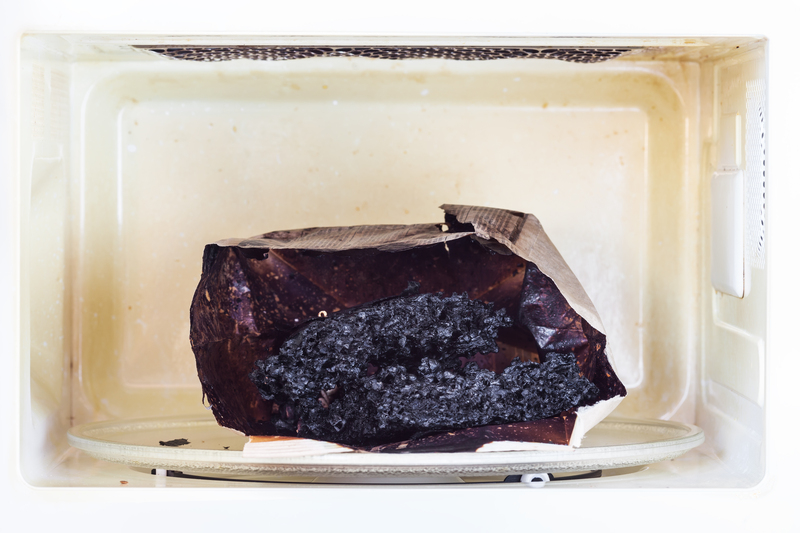Indoor Air Excellence: A Step Towards Better Living
Posted on 19/09/2025
Indoor Air Excellence: A Step Towards Better Living
Healthy indoor air quality is more important today than ever before. With the majority of people spending over 90% of their time indoors, the pursuit of indoor air excellence has become a cornerstone of modern living. In this comprehensive guide, we will explore the significance of clean indoor air, practical steps to achieve indoor air quality improvement, and the remarkable benefits this brings to overall well-being.
Why Indoor Air Quality Matters
Understanding the importance of indoor air quality (IAQ) is the first step towards fostering a healthier home or workspace. According to the World Health Organization, poor air quality inside living spaces contributes to millions of illnesses annually. The air inside can be up to five times more polluted than outdoor air, harboring allergens, chemical pollutants, and dangerous microorganisms.
The Health Implications of Poor Indoor Air
- Respiratory issues such as allergies, asthma, and chronic bronchitis
- Fatigue and headaches caused by elevated carbon dioxide or chemical fumes
- Long-term exposure risks including heart disease and cancer
- Sensitivity in children and the elderly
- Productivity loss due to discomfort or illness in workspaces
Improving IAQ is not merely a luxury--it's an essential step towards better living. By prioritizing indoor air purity, households and businesses safeguard their health, comfort, and even productivity.

Common Sources of Indoor Air Pollution
To achieve indoor air excellence, it's crucial to identify and address the primary sources of indoor air contaminants. Airborne pollutants come from a variety of sources, including:
- Outdoor Pollutants: Pollen, dust, and exhaust that infiltrate inside
- Building Materials: Volatile organic compounds (VOCs) released from paints, flooring, and furniture
- Household Products: Cleaning agents, air fresheners, and personal care items
- Moisture: Leading to mold and mildew growth
- Poor Ventilation: Trapping contaminants and increasing indoor concentrations
- Combustion Appliances: Gas stoves, heaters, and fireplaces releasing carbon monoxide and particulates
- Pest Infestation: Dust mites, cockroaches, and rodents introducing allergens
Principles of Achieving Indoor Air Excellence
Securing excellence in indoor air hinges on a strategy comprising three fundamental pillars: elimination, ventilation, and purification.
1. Source Control & Elimination
Remove or reduce the origin of contaminants. Opt for low-VOC materials, non-toxic household products, and keep moisture levels in check. Regular cleaning and preventive maintenance of appliances significantly reduce the build-up of indoor air pollutants.
2. Proper Ventilation
Consistent air exchange is essential. Open windows when weather allows, use exhaust fans in bathrooms and kitchens, and consider installing energy recovery ventilators (ERVs) or heat recovery ventilators (HRVs) for balanced airflow without excessive energy loss.
3. High-Efficiency Filtration and Purification
Use HEPA filters in HVAC systems or standalone air purifiers to capture fine particulates and microorganisms. Technologies such as UV light or activated carbon filters further neutralize volatile organic compounds and bacteria for ultimate indoor air quality.
Step-By-Step Guide to Improving Indoor Air Quality
Advancing towards air excellence in your home or office doesn't have to be overwhelming. Here's a simple step-by-step process to help you breathe cleaner, fresher air:
Step 1: Conduct an Indoor Air Quality Assessment
Begin by evaluating your space for sources of pollution and areas with poor airflow. Indoor air quality monitors are affordable tools to measure VOC, CO2, particulate levels, and humidity.
Step 2: Boost Natural and Mechanical Ventilation
- Open windows regularly to allow for air exchange.
- Set up exhaust fans in high-moisture and cooking areas.
- Consider mechanical solutions for air-tight homes (such as ERVs or HRVs).
Step 3: Control Humidity
Keep humidity between 30-50% to prevent mold and make breathing more comfortable.
Use dehumidifiers in damp areas and fix any leaks immediately.
Step 4: Replace and Maintain Filters
- Replace HVAC and air purifier filters as recommended.
- Choose HEPA-rated filters for the greatest particle removal.
- Clean air ducts periodically.
Step 5: Eliminate Indoor Pollutants
- Switch to green cleaning products.
- Limit the use of candles and incense.
- No smoking indoors.
- Choose low-emission paints and furnishings.
Step 6: Integrate Air-Purifying Plants
NASA studies have shown that certain houseplants can absorb organic pollutants. Consider including peace lilies, snake plants, and spider plants which are effective and easy to maintain.
Smart Technologies for Indoor Air Excellence
Technological advancements have made achieving indoor air excellence simpler than ever. Here are some innovations revolutionizing IAQ:
- Smart Air Quality Monitors send real-time alerts and recommendations for improving IAQ.
- Automated Air Purifiers with particle sensors adjust purification levels as needed.
- IoT-Connected HVAC Systems optimize ventilation and filtration based on occupancy and air quality data.
By leveraging these technologies, you can maintain optimal air quality without constant oversight.
The Benefits of Achieving Indoor Air Excellence
There are immediate and long-term advantages to investing in superior indoor air:
- Enhanced respiratory health and reduced allergy/asthma symptoms
- Better sleep quality and increased energy levels
- Improved cognitive function and productivity for both adults and children
- Lowered risk of airborne infections and chronic disease
- Protection of furniture and electronics from dust and humidity damage
Ultimately, indoor air quality excellence is inseparable from quality of life!
Indoor Air Excellence: Best Practices for Homes
For Bedrooms
- Wash bedding in hot water weekly to remove dust mites.
- Avoid heavy curtains and carpets that trap allergens.
- Keep pets out for sensitive individuals.
For Kitchens and Bathrooms
- Always use exhaust fans while cooking or showering.
- Wipe down surfaces to prevent mold and mildew.
- Store volatile chemicals (cleaners, solvents) away from living spaces.
Living and Common Areas
- Vacuum regularly with a HEPA-filtered vacuum.
- Declutter to reduce dust accumulation.
- Introduce air-purifying plants but avoid soil overwatering.
How Businesses Can Prioritize Indoor Air Quality
Corporations and small businesses alike are recognizing the value of maintaining commercial indoor air excellence:
- Routine IAQ assessments and regular maintenance of HVAC systems.
- Use of professional air cleaning technologies in shared workspaces.
- Establishment of no smoking and fragrance-free zones.
- Education of staff on best practices for maintaining healthy air at work.
Healthy offices mean less absenteeism, greater productivity, and an enhanced reputation as an employer or business partner.

Frequently Asked Questions (FAQ)
Is indoor air really more polluted than outdoor air?
Yes, studies consistently show that indoor air can contain higher concentrations of pollutants like VOCs, allergens, and particulates because of limited ventilation and numerous indoor sources.
What is the most effective way to achieve air quality excellence?
The combined approach of source elimination, proper ventilation, and high-efficiency air purification offers the best results for creating excellent indoor air quality.
Do air-purifying plants work?
While useful, plants should supplement--not replace--other IAQ strategies. They help absorb VOCs and add oxygen but cannot address all pollutants, especially particulates or microbes.
How often should filters be replaced?
Most HVAC and purifier filters should be replaced every 2-6 months, but check the manufacturer's recommendations and local air quality to determine the optimal schedule.
Conclusion: Step Confidently Into Better Living
Indoor air excellence is both an aspiration and a practical necessity in today's world. With simple changes, the right technology, and ongoing diligence, any space can transform into a healthier haven where people, families, and teams thrive. By prioritizing indoor air quality, you not only protect your health but lay the foundation for an improved quality of life. Start your journey towards better living through indoor air excellence today, and breathe easier every single day.





